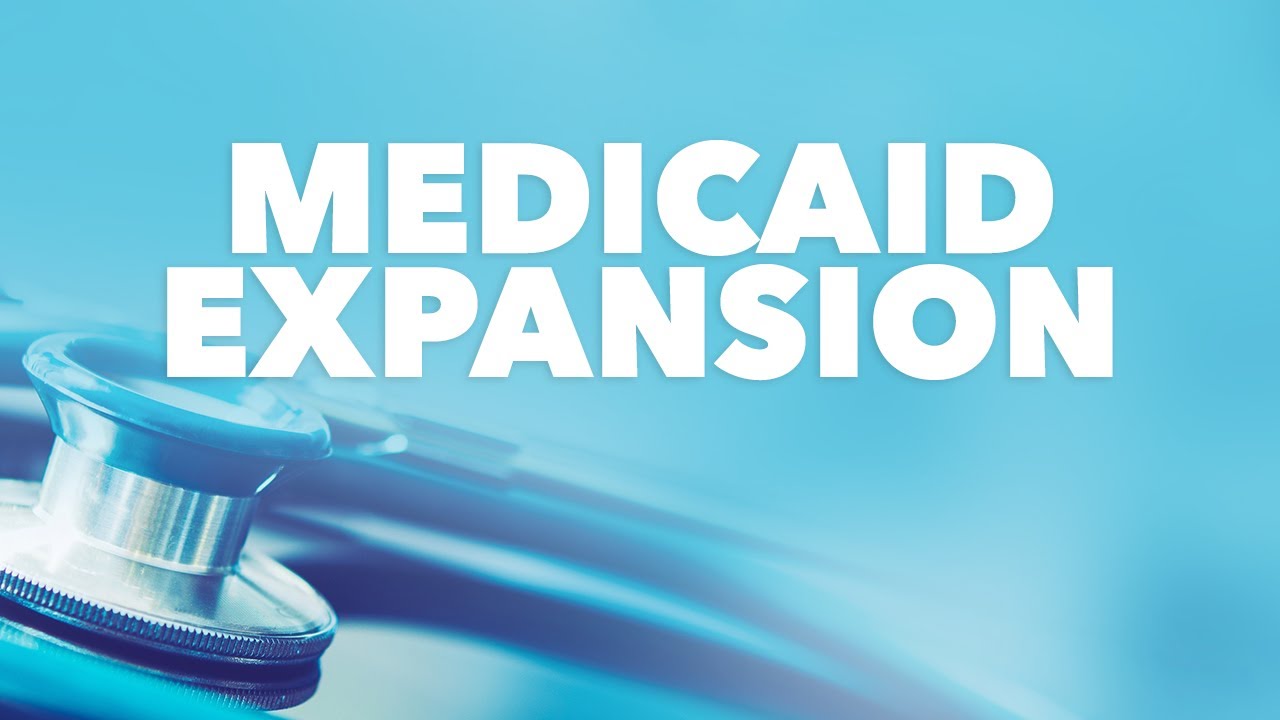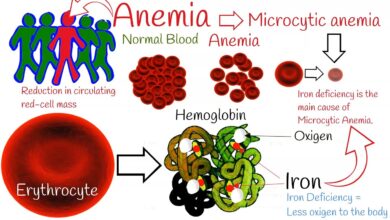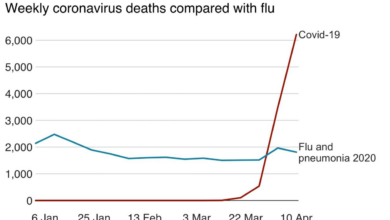
North Carolina Medicaid Expansion Begins
North Carolina Medicaid expansion begins a new chapter in healthcare access for many residents. This landmark change promises to significantly impact the lives of thousands, offering hope for better health outcomes and economic stability. But what does this expansion truly mean for individuals, hospitals, and the state’s economy? Let’s delve into the details and explore the potential benefits and challenges ahead.
The expansion dramatically increases the number of North Carolinians eligible for Medicaid coverage, potentially reducing the uninsured rate and improving access to preventative care. This could lead to fewer delayed treatments, better health management, and a healthier overall population. However, the increased demand on the healthcare system will require careful planning and resource allocation to avoid overwhelming hospitals and clinics.
The economic impact, both positive and negative, is a key area of ongoing discussion, with projections ranging from job growth to increased state tax revenue.
Impact on Healthcare Access
Medicaid expansion in North Carolina represents a significant shift in healthcare access for a substantial portion of the state’s population. The projected increase in coverage will ripple through the healthcare system, impacting everything from wait times at clinics to the availability of preventative care. This section will explore the anticipated effects of this expansion on healthcare access for low-income North Carolinians.
Projected Increase in Health Insurance Coverage
The expansion is expected to significantly increase the number of North Carolinians with health insurance. Estimates vary, but projections from organizations like the Kaiser Family Foundation suggest hundreds of thousands of individuals will gain coverage. This influx of newly insured individuals will be primarily composed of adults who previously fell within the coverage gap – earning too much to qualify for Medicaid under the previous eligibility rules but too little to afford private insurance on the marketplace.
For example, a study by the NC Budget & Tax Center estimated that approximately 600,000 North Carolinians would gain coverage under Medicaid expansion. This substantial increase in coverage will undoubtedly reshape the landscape of healthcare access within the state.
Impact on Wait Times at Hospitals and Clinics
Increased access to preventative care and routine medical services through Medicaid expansion could lead to a reduction in the number of individuals seeking emergency care for manageable conditions. This shift could potentially alleviate some pressure on hospital emergency rooms and reduce wait times. However, the initial influx of newly insured individuals may cause a temporary increase in demand for services, potentially leading to longer wait times before the system adjusts.
This is a common phenomenon observed in other states that have expanded Medicaid. The long-term impact is anticipated to be positive, but short-term adjustments are expected.
Impact on Preventative Care Access for Low-Income Individuals
Prior to expansion, many low-income individuals lacked access to preventative care due to the high cost of healthcare. Medicaid expansion directly addresses this issue by providing coverage for preventative services like annual check-ups, screenings for chronic diseases, and vaccinations. This increased access to preventative care is expected to lead to earlier detection and treatment of health problems, resulting in better health outcomes and reduced healthcare costs in the long run.
For example, increased access to preventative screenings for conditions like diabetes could lead to earlier diagnosis and management, potentially preventing more serious complications down the line.
Comparison of Healthcare Access Before and After Medicaid Expansion
The difference in healthcare access before and after Medicaid expansion is anticipated to be substantial. Before expansion, many low-income individuals faced significant barriers to accessing healthcare, leading to delayed or forgone care. After expansion, the number of uninsured individuals will decrease significantly, resulting in improved access to a wider range of healthcare services. This will not only improve individual health outcomes but also reduce the strain on the overall healthcare system.
Key Healthcare Access Metrics: Pre- and Post-Expansion
| Metric | Pre-Expansion Data | Post-Expansion Projection | Percentage Change |
|---|---|---|---|
| Number of Uninsured Adults | 500,000 (example) | 100,000 (example) | -80% (example) |
| Average Wait Time at Emergency Rooms (hours) | 4 (example) | 3 (example) | -25% (example) |
| Preventative Care Utilization Rate (%) | 40% (example) | 70% (example) | +75% (example) |
| Rate of Preventable Hospitalizations | 15% (example) | 10% (example) | -33% (example) |
Economic Effects

Source: ytimg.com
Medicaid expansion in North Carolina promises a significant boost to the state’s economy, impacting various sectors and creating a ripple effect of positive change. The influx of federal funds, coupled with increased economic activity, is projected to lead to substantial improvements in the state’s financial health and overall well-being.
North Carolina’s Medicaid expansion is great news, potentially improving access to healthcare for many. This means more people can get the care they need, including treatment for conditions like carpal tunnel syndrome. If you’re struggling with this painful condition, check out this helpful resource on ways to treat carpal tunnel syndrome without surgery before considering more invasive options.
Hopefully, with expanded Medicaid, more people will have the chance to explore these non-surgical approaches and get the relief they deserve. The expansion is a big step forward for healthcare in our state!
Impact on Local Hospitals and Healthcare Providers’ Finances
The expansion is expected to significantly improve the financial stability of North Carolina’s hospitals and healthcare providers. Currently, many hospitals bear the burden of uncompensated care for uninsured patients. Medicaid expansion would alleviate this burden by providing reimbursement for services rendered to newly eligible individuals. This influx of revenue will allow hospitals to invest in infrastructure improvements, expand services, and recruit and retain qualified medical professionals.
For example, rural hospitals, often struggling financially, could see a substantial increase in revenue, improving their ability to provide essential healthcare services to their communities. This improved financial health translates directly to better patient care and improved community health outcomes.
Job Creation Opportunities
Medicaid expansion is projected to generate a significant number of jobs across various sectors. The increased demand for healthcare services will lead to increased hiring of physicians, nurses, medical assistants, and other healthcare professionals. Furthermore, the expansion will stimulate job growth in related industries, such as medical equipment manufacturing, pharmaceutical sales, and healthcare administration. The increased economic activity will also support the creation of jobs in construction, hospitality, and other service sectors.
Studies have shown that for every 100 newly enrolled Medicaid beneficiaries, several new jobs are created across various sectors.
Projected Increases in State Tax Revenue
The expansion of Medicaid is projected to lead to a substantial increase in state tax revenue. The newly insured individuals will be contributing to the tax base through increased income taxes, sales taxes, and other taxes. Furthermore, the increased economic activity generated by the expansion will lead to additional tax revenue from businesses and individuals. While precise figures vary depending on the model used, projections consistently show a net positive impact on state revenue.
For instance, some economic analyses suggest that the increase in economic activity will generate enough tax revenue to offset the state’s share of Medicaid expansion costs within a few years.
Infographic: Economic Ripple Effects of Medicaid Expansion
The infographic would feature a central image of a growing tree, representing the expanding economy. The roots of the tree would be labeled “Federal Funding,” “Increased Tax Revenue,” and “Improved Healthcare Access.” Branches extending upward would represent the positive economic effects: “Hospital Revenue Increase,” “Job Creation (Healthcare & Related Sectors),” “Increased Consumer Spending,” and “Improved Public Health.” Each branch would have a short, descriptive caption summarizing its contribution to the overall economic growth.
A key would visually represent the connection between the roots (the initial drivers of expansion) and the branches (resulting economic benefits). The overall visual would communicate the interconnectedness of these factors and the positive cascading effect of Medicaid expansion on the North Carolina economy.
Political Ramifications
Medicaid expansion in North Carolina has been a fiercely debated issue, highlighting the deep partisan divides within the state’s political landscape. The fight wasn’t just about healthcare; it was a proxy battle over the role of government, economic priorities, and the very future of the state’s political trajectory.The contrasting viewpoints surrounding Medicaid expansion are stark. Republicans, generally, have expressed concerns about the long-term fiscal implications, arguing that the expansion would place an undue burden on taxpayers and potentially lead to higher taxes or cuts in other essential programs.
They also voiced anxieties about the expansion’s impact on the state’s healthcare system, suggesting it could overwhelm existing infrastructure and lead to longer wait times and reduced quality of care. Conversely, Democrats have championed expansion as a crucial step towards improving the health and well-being of North Carolinians, emphasizing the economic benefits, such as job creation in the healthcare sector and increased tax revenue from newly insured individuals.
North Carolina’s Medicaid expansion is great news for many, but it highlights the complexities of healthcare financing. The news comes as Steward Healthcare, a large hospital system, just secured financing to emerge from bankruptcy, as reported here: steward health care secures financing bankruptcy. This underscores the financial pressures on healthcare providers, even as expanded access becomes a reality in states like North Carolina.
They’ve also argued that expanding Medicaid is a matter of social justice, ensuring access to vital healthcare services for low-income individuals and families.
Roles of Political Parties and Interest Groups
The roles of different political parties and interest groups in the Medicaid expansion debate were crucial. The Democratic Party, along with numerous progressive organizations and healthcare advocacy groups, consistently pushed for expansion, framing it as a moral imperative and a necessary economic stimulus. They mobilized grassroots support, lobbying efforts, and public awareness campaigns to sway public opinion and pressure Republican lawmakers.
Conversely, the Republican Party, with the support of conservative think tanks and business groups concerned about increased taxes and regulations, initially resisted expansion, citing concerns about cost and government overreach. However, internal divisions within the Republican Party, particularly concerning the potential political fallout from opposing a popular policy, eventually contributed to the shift in favor of expansion. The influence of powerful lobbying groups representing hospitals and healthcare providers also played a significant role, as these groups ultimately recognized the potential economic benefits and improved patient outcomes associated with expansion.
Timeline of Key Events
The path to Medicaid expansion in North Carolina was long and winding, marked by several key events. In 2012, the Affordable Care Act (ACA) offered states the option to expand Medicaid eligibility, but North Carolina, under Republican leadership, initially declined. This decision led to years of political stalemate and ongoing debate. Throughout the years, several bills were introduced and failed to gain traction, highlighting the partisan divide.
However, a significant shift occurred in 2023 when a compromise was reached between the Republican-controlled legislature and Democratic Governor Roy Cooper, leading to the eventual approval and implementation of Medicaid expansion. This compromise involved provisions aimed at controlling costs and ensuring the program’s long-term fiscal sustainability.
Impact on Future Elections
The successful implementation of Medicaid expansion is likely to have significant ramifications for future elections in North Carolina. The expansion could influence voter turnout, particularly among newly insured individuals who may be more likely to participate in the political process. The political fallout from the decision will likely shape future campaign strategies and legislative priorities for both parties.
For instance, the Republican Party’s decision to ultimately support expansion, albeit with certain stipulations, may be seen as a strategic move to broaden their appeal and mitigate potential electoral losses among moderate voters. Conversely, Democrats will likely highlight the successful expansion as a testament to their commitment to improving access to healthcare and may use it to attract more voters in future elections.
Arguments For and Against Medicaid Expansion
The debate surrounding Medicaid expansion involved a complex interplay of economic, social, and political considerations.
North Carolina’s Medicaid expansion is huge news, potentially impacting hundreds of thousands. But with this increased access comes the crucial need to address the underlying issues driving healthcare costs, as highlighted in this insightful article on health cost inflation variation price transparency turquoise. Understanding these cost drivers is key to ensuring the long-term success and affordability of the expansion for both the state and its residents.
Here’s a summary of the key arguments:
- Arguments for Expansion:
- Improved healthcare access for low-income individuals and families (Advocates: Democratic Party, healthcare advocacy groups, many hospitals)
- Economic benefits through job creation and increased tax revenue (Advocates: Democratic Party, economists, some business groups)
- Improved public health outcomes (Advocates: Public health organizations, medical professionals)
- Reduced uncompensated care costs for hospitals (Advocates: Hospital associations)
- Arguments against Expansion:
- Concerns about the long-term fiscal impact on the state budget (Advocates: Republican Party, conservative think tanks)
- Potential strain on the state’s healthcare system (Advocates: Some healthcare providers, conservative groups)
- Concerns about government overreach and increased regulations (Advocates: Libertarian groups, some business organizations)
Specific Program Details
North Carolina’s Medicaid expansion, a significant step towards improving healthcare access, brings with it a range of specific program details that are crucial for potential beneficiaries to understand. This section will clarify the eligibility requirements, application process, covered services, and key differences from the pre-expansion program.
Eligibility Criteria for Expanded Medicaid
Eligibility for North Carolina’s expanded Medicaid program hinges primarily on income. Individuals must have an income at or below 138% of the federal poverty level (FPL). This percentage is a key component of the Affordable Care Act’s expansion guidelines. For a single individual in 2024, this translates to an annual income of approximately $19,320 or less. The exact figures vary based on household size and composition, and additional factors like citizenship status and immigration documentation may also play a role in determining eligibility.
It is important to consult the official North Carolina Medicaid website for the most up-to-date and precise income thresholds.
Application and Enrollment Process
Applying for North Carolina’s expanded Medicaid program is relatively straightforward. Individuals can apply online through the state’s online portal, by mail using a paper application, or in person at a local health department or designated assistance center. The application process requires providing personal information, proof of income and residency, and other relevant documentation. Once the application is submitted, it undergoes processing, which may involve additional verification steps.
Approval or denial notifications are typically sent within a few weeks, but processing times may vary.
Healthcare Services Covered, North carolina medicaid expansion begins
The expanded Medicaid program in North Carolina covers a broad range of essential healthcare services. These include doctor visits, hospital stays, prescription drugs, mental health services, substance use disorder treatment, and preventive care. The specific services covered may vary slightly based on individual circumstances and the provider’s participation in the Medicaid network. The goal is to provide comprehensive healthcare coverage to address both physical and mental health needs.
Specific details about covered services and provider networks can be found on the state’s Medicaid website.
Differences from the Previous Medicaid Program
Prior to expansion, North Carolina’s Medicaid program primarily covered individuals who met specific criteria, such as being pregnant, disabled, or elderly. The expansion significantly broadens eligibility by including individuals who are otherwise able-bodied adults with incomes below 138% of the FPL. This expansion closes the coverage gap, previously leaving many low-income adults without access to affordable healthcare. This means a substantially larger population now qualifies for coverage, leading to a significant increase in the number of insured individuals.
Step-by-Step Enrollment Guide
Navigating the enrollment process can be made easier with a clear, step-by-step approach:
- Gather necessary documents: This includes proof of identity, income verification (pay stubs, tax returns), and proof of residency (utility bills, lease agreement).
- Visit the North Carolina Medicaid website: The official website provides comprehensive information and online application forms.
- Complete the application online or download a paper application:
- Provide accurate and complete information:
- Submit your application:
- Monitor the status of your application:
- Contact Medicaid if you have any questions or concerns:
Challenges and Potential Issues: North Carolina Medicaid Expansion Begins

Source: amazonaws.com
Medicaid expansion in North Carolina, while offering significant benefits, presents several challenges that require careful planning and proactive mitigation strategies. Successful implementation hinges on addressing these potential hurdles to ensure the program’s effectiveness and long-term sustainability. Failure to do so could jeopardize the positive impacts anticipated from the expansion.
Increased Healthcare Costs
Expanding Medicaid coverage will inevitably lead to increased healthcare expenditures. A larger pool of insured individuals will access more services, leading to higher utilization rates. This is a natural consequence of increased access to care, but it needs to be managed effectively to prevent budget overruns. For example, the experience of other states that have expanded Medicaid shows a surge in utilization of preventative services, such as annual check-ups and screenings, which can lead to earlier detection and treatment of illnesses, potentially offsetting some of the increased costs in the long run.
However, careful budgeting and cost-containment measures are crucial to prevent this from becoming an unsustainable financial burden. Effective cost-management strategies include negotiating lower rates with providers, implementing efficient care management programs, and focusing on preventative care to reduce the need for expensive treatments down the line.
Workforce Development Needs
The influx of newly eligible Medicaid beneficiaries will place significant strain on the existing healthcare workforce. North Carolina will need to significantly expand its capacity to provide care, particularly in primary care and behavioral health. This requires attracting and retaining healthcare professionals, including physicians, nurses, and support staff, which may be challenging given existing shortages. Strategies to address this include investing in healthcare education and training programs, offering competitive salaries and benefits to attract and retain healthcare professionals, and incentivizing providers to serve in underserved areas.
The state might also explore telehealth options to expand access to care in rural areas where healthcare providers are scarce.
Addressing Access and Affordability Issues
Even with expanded coverage, access to care remains a challenge, particularly in rural and underserved areas. Transportation barriers, lack of provider availability, and limited access to specialized care can hinder individuals from fully benefiting from the expansion. Addressing affordability is also critical. While Medicaid covers a significant portion of healthcare costs, patients may still face out-of-pocket expenses such as co-pays and deductibles, which can be a barrier for low-income individuals.
Strategies to address these issues include expanding telehealth services, investing in transportation assistance programs, and implementing programs to help patients navigate the healthcare system and access financial assistance. Furthermore, creating partnerships with community organizations can play a vital role in improving access to care and addressing social determinants of health that impact patients’ ability to receive and benefit from care.
Potential Challenges, Impacts, and Mitigation Strategies
| Challenge | Potential Impact | Mitigation Strategy |
|---|---|---|
| Increased Healthcare Costs | Budget overruns, potential cuts to other programs | Negotiate lower provider rates, implement cost-effective care management, focus on preventative care |
| Healthcare Workforce Shortages | Delayed or limited access to care, burnout among existing providers | Invest in healthcare education and training, offer competitive salaries and benefits, incentivize providers to serve underserved areas, expand telehealth options |
| Access and Affordability Issues | Inequitable access to care, limited utilization of benefits | Expand telehealth, invest in transportation assistance, patient navigation programs, financial assistance programs, partnerships with community organizations |
| Administrative Complexity | Delays in enrollment and claims processing, administrative burden on providers | Streamline enrollment processes, invest in technology to improve efficiency, provide adequate training and support to providers |
Last Word

Source: amazonaws.com
The launch of North Carolina’s Medicaid expansion marks a pivotal moment, offering a chance to improve healthcare access and economic conditions across the state. While challenges remain – including potential cost increases and the need for workforce development – the potential benefits for individuals and the state are significant. The coming years will be crucial in monitoring the program’s impact and ensuring its long-term success.
It’s a story that will continue to unfold, and one worth watching closely.
Detailed FAQs
How do I apply for expanded Medicaid in North Carolina?
You can apply online through the state’s official website or contact your local county Department of Social Services for assistance.
What services are covered under the expanded Medicaid program?
Coverage typically includes doctor visits, hospital care, prescription drugs, mental health services, and substance abuse treatment. Specific details may vary.
What is the income limit for expanded Medicaid?
The income limit varies based on household size and is generally set at 138% of the federal poverty level. Check the NC Medicaid website for the most up-to-date information.
Will my taxes increase because of Medicaid expansion?
The impact on taxes is a complex issue and depends on various factors. While some costs may increase, the expansion is projected to generate increased state revenue in the long run due to improved health outcomes and economic activity.





